Full text
PDF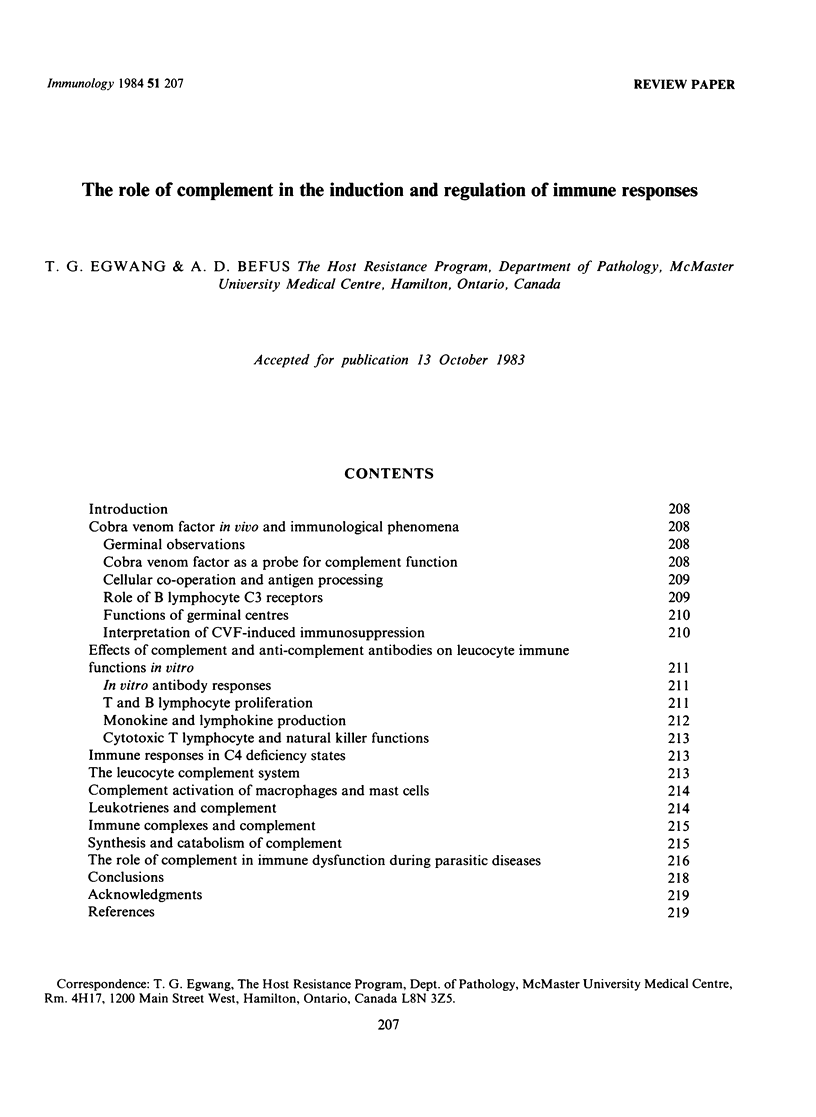
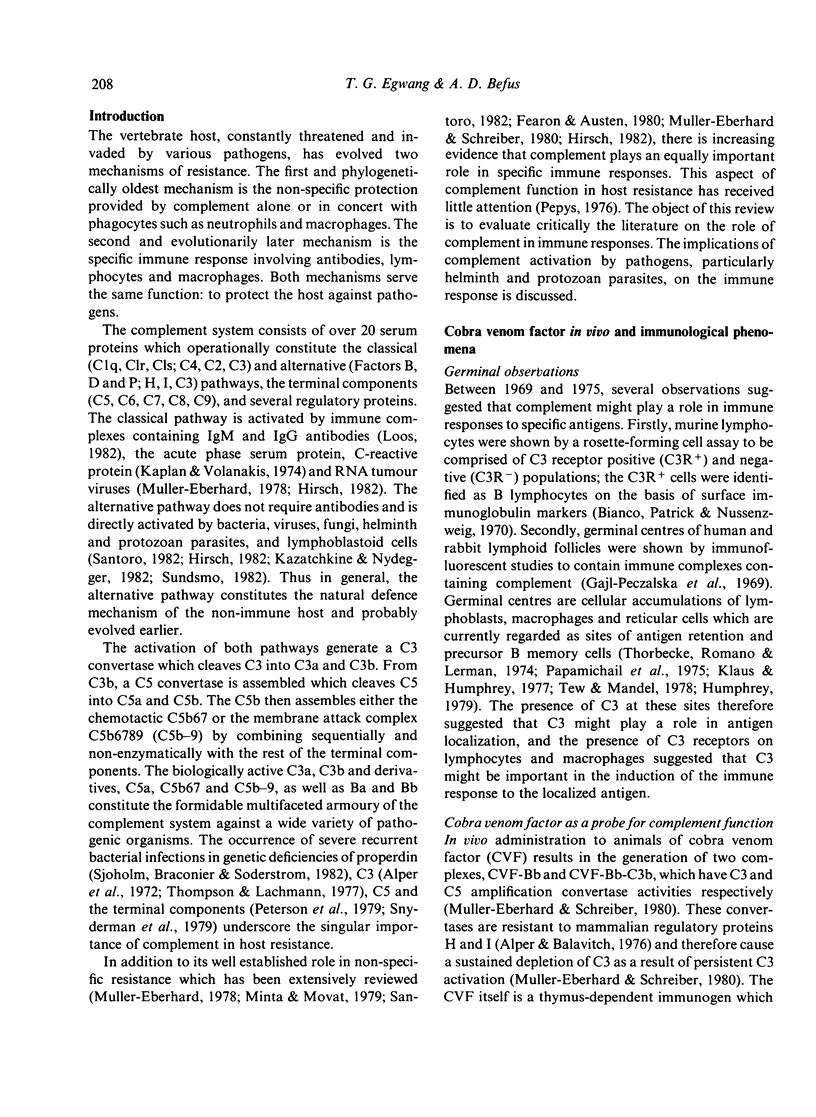
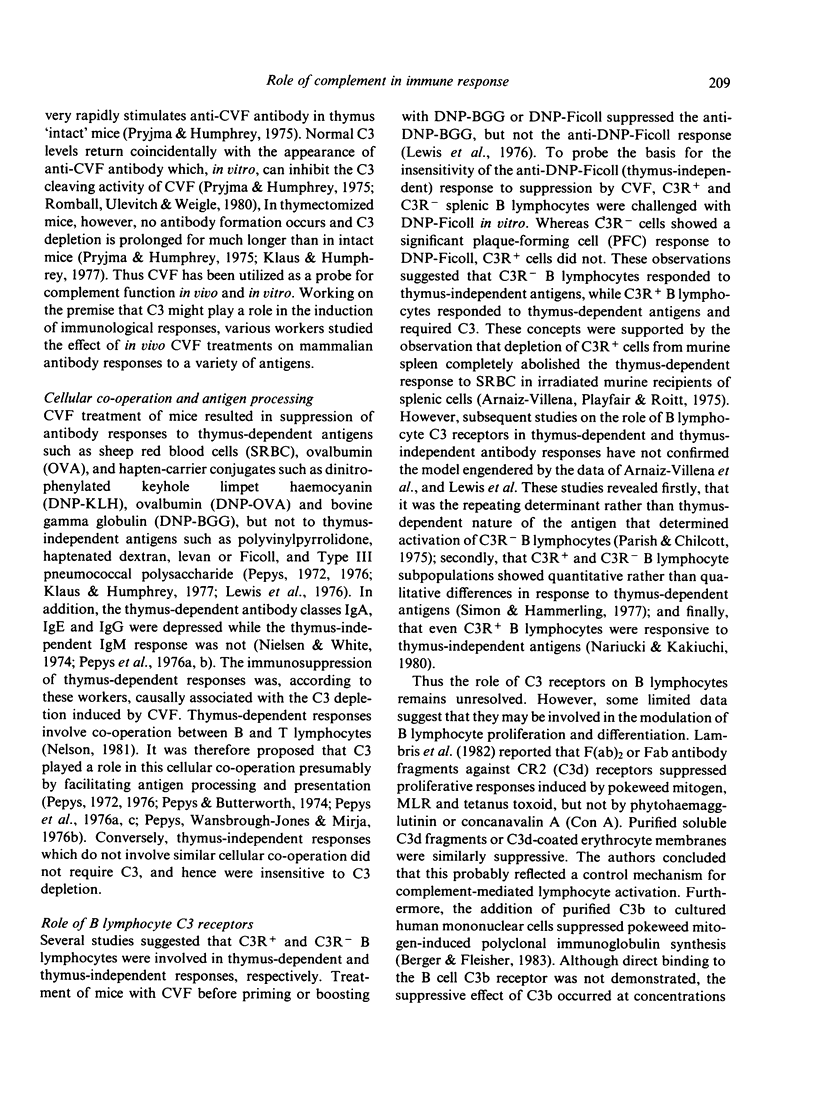
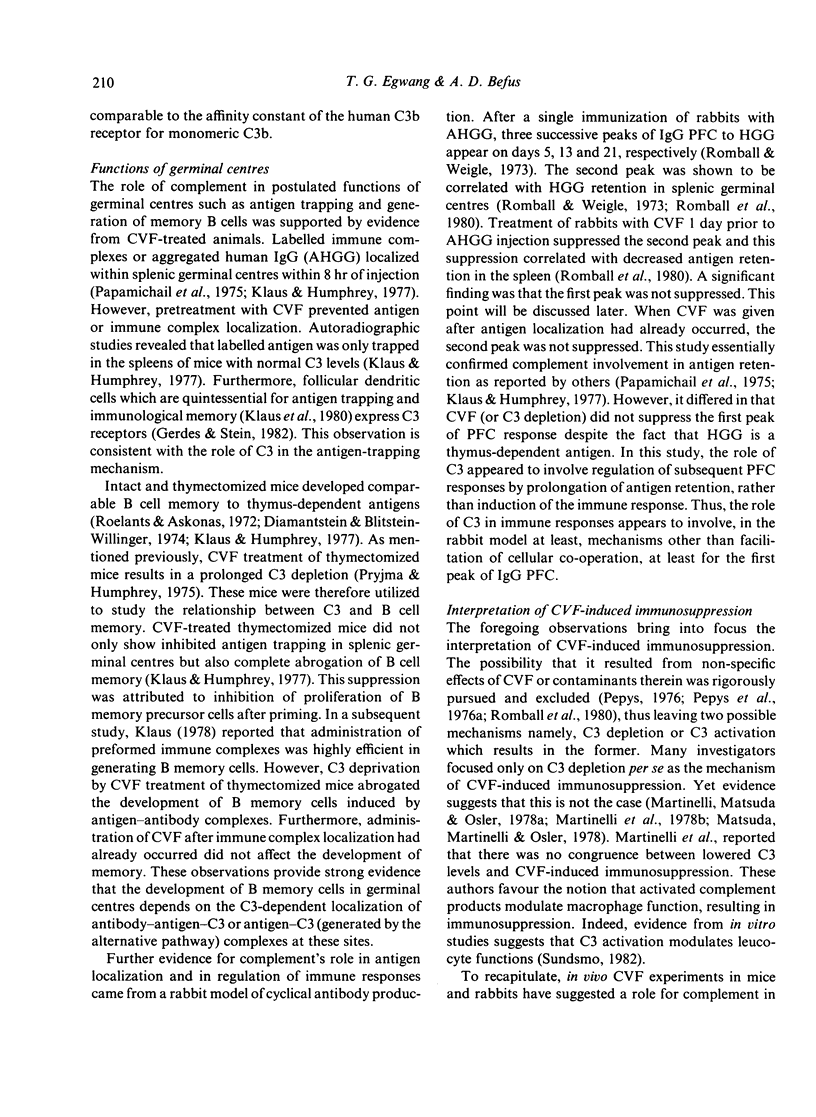
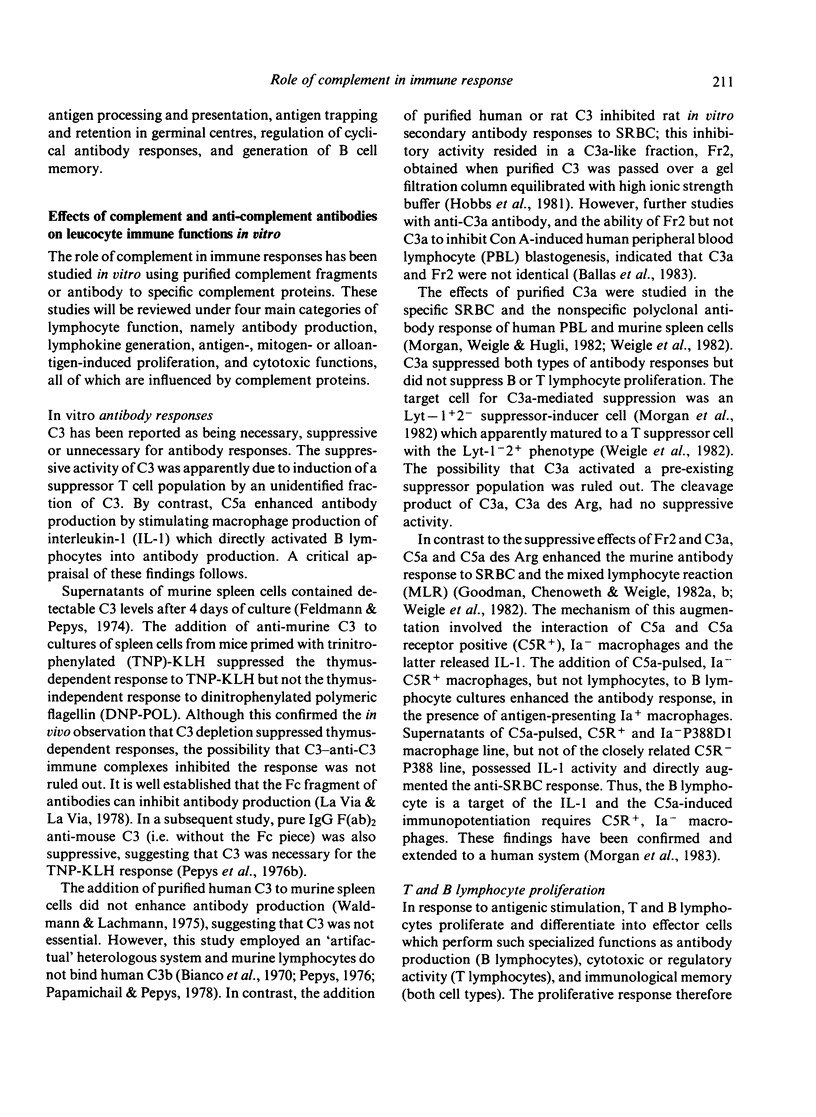
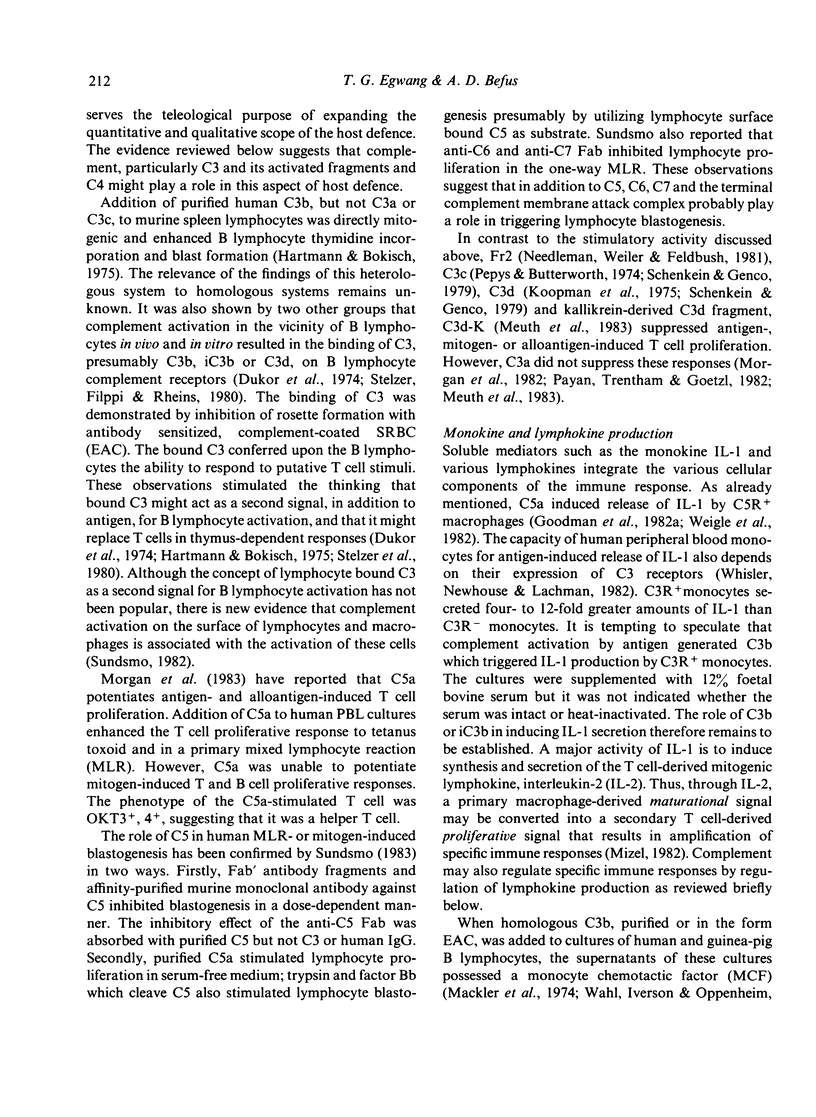
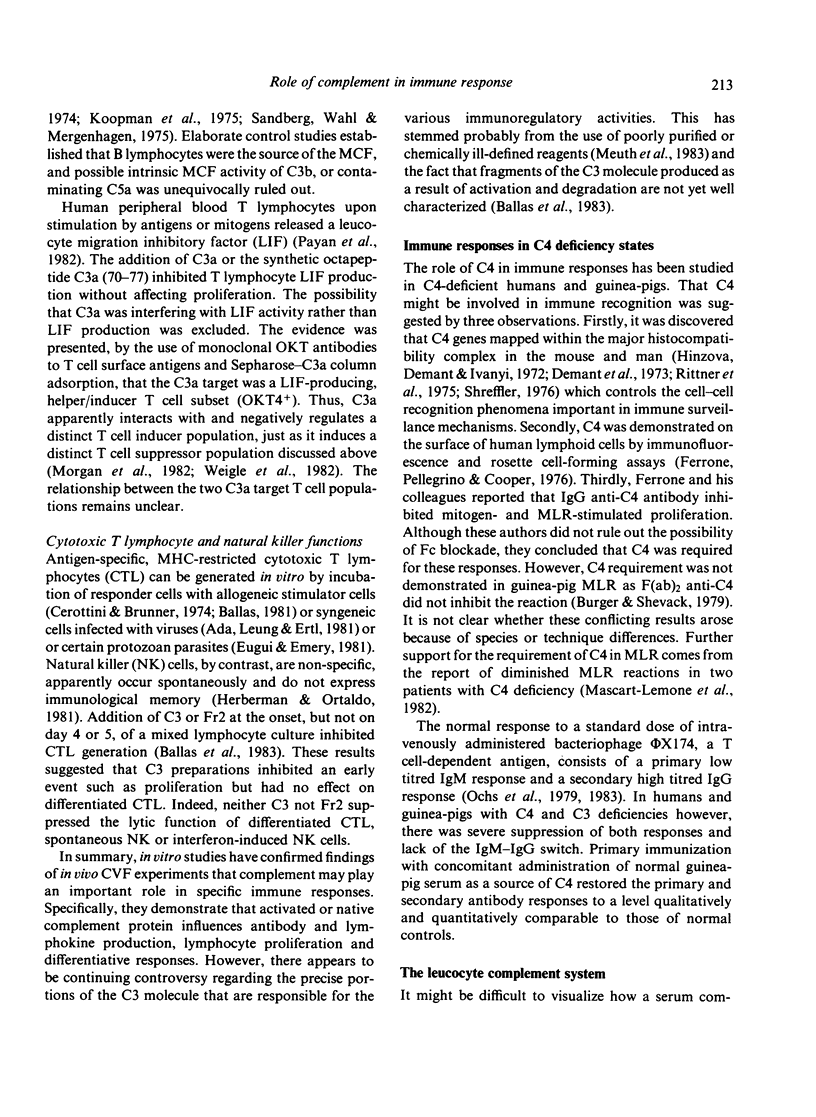
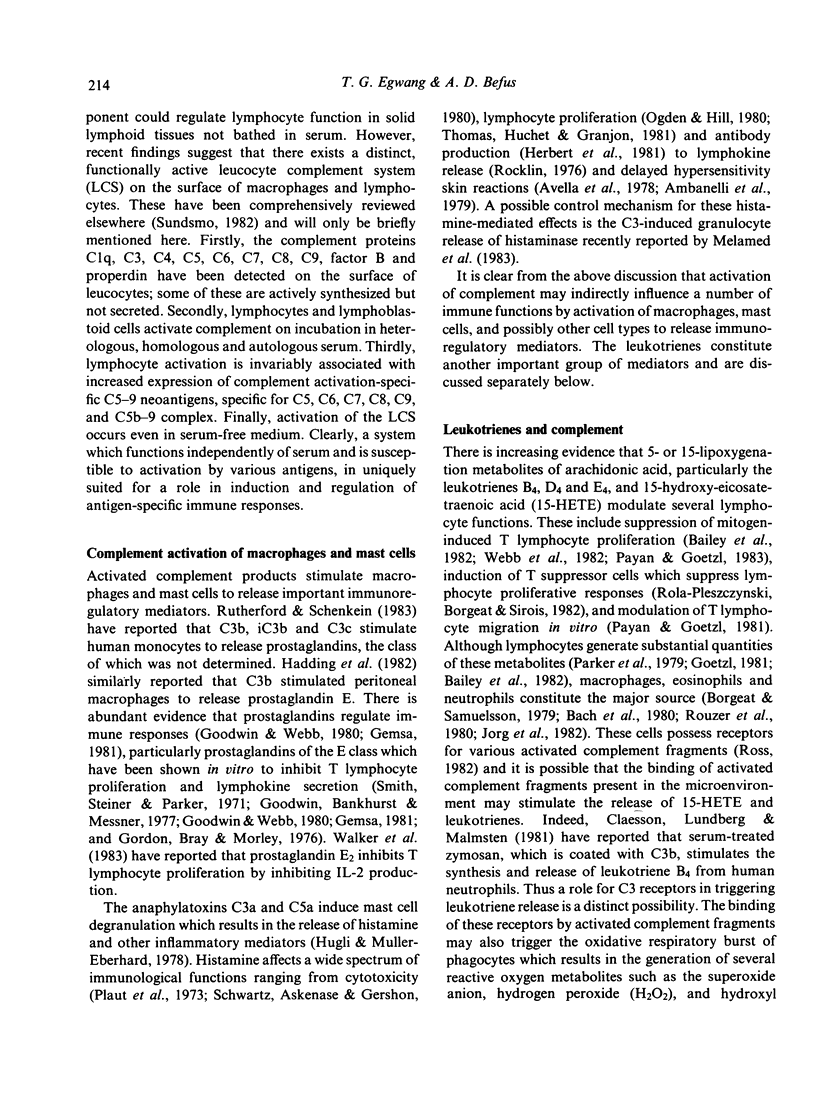
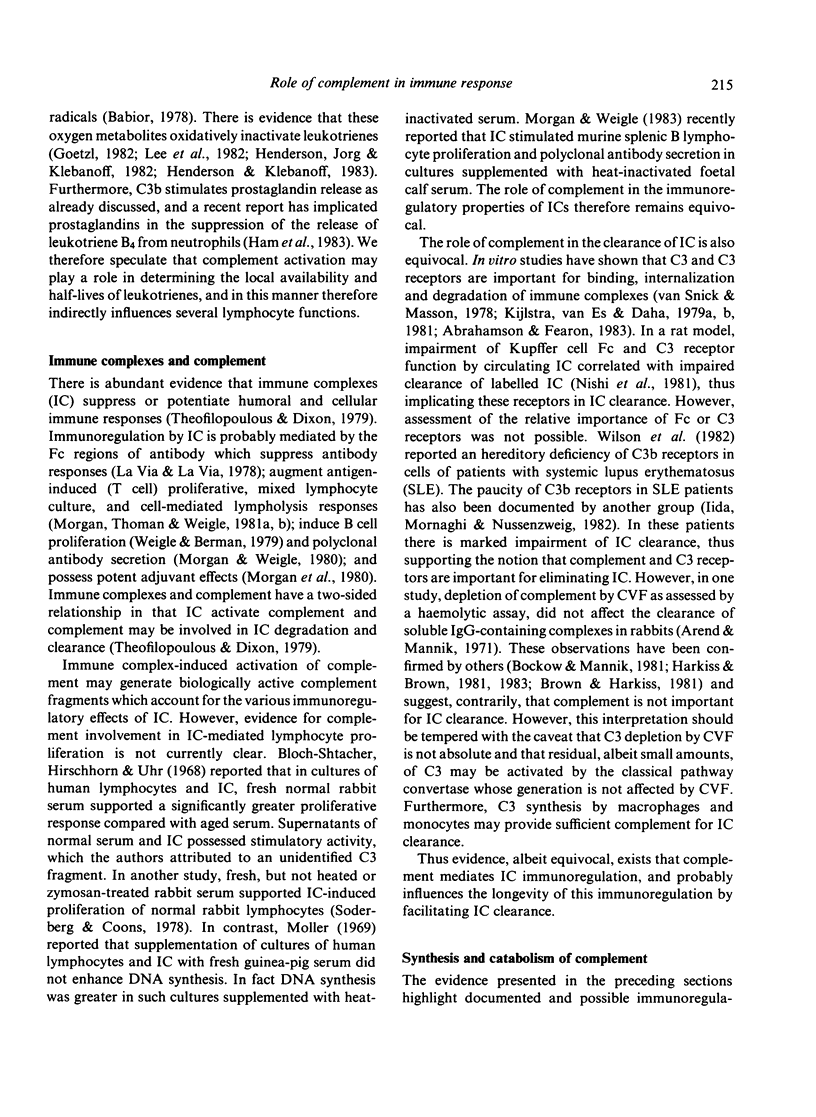
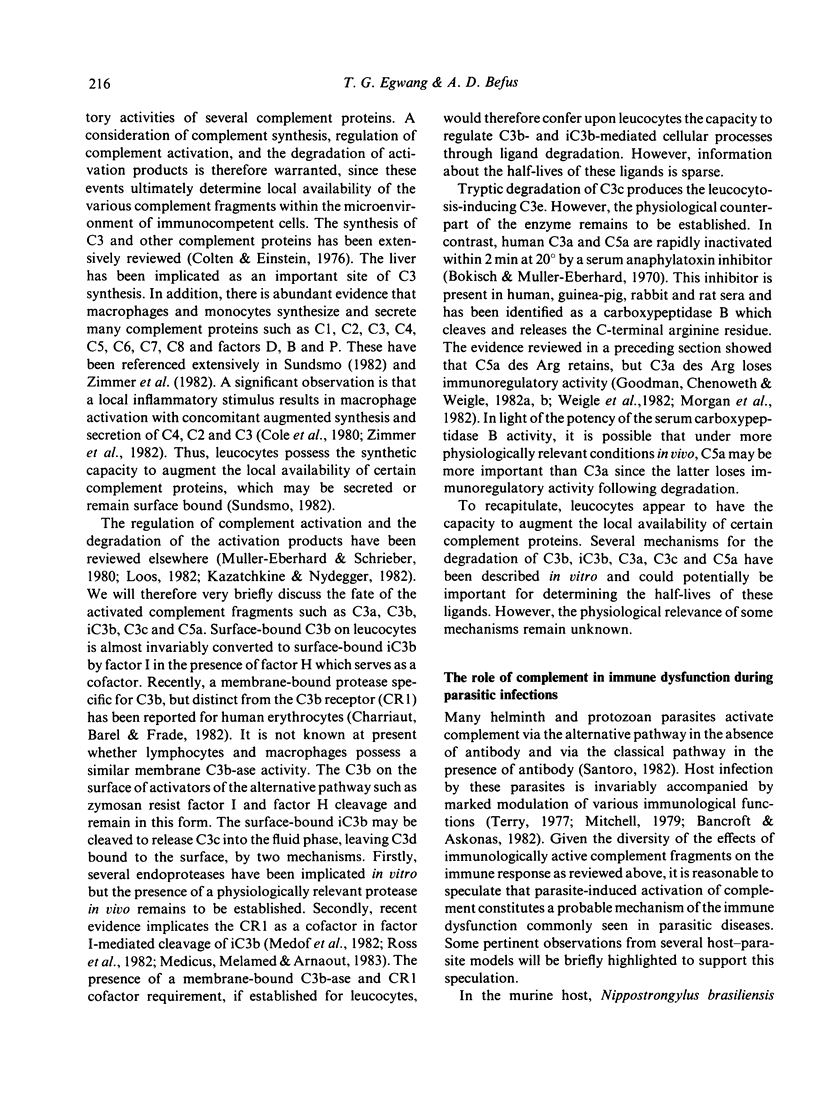
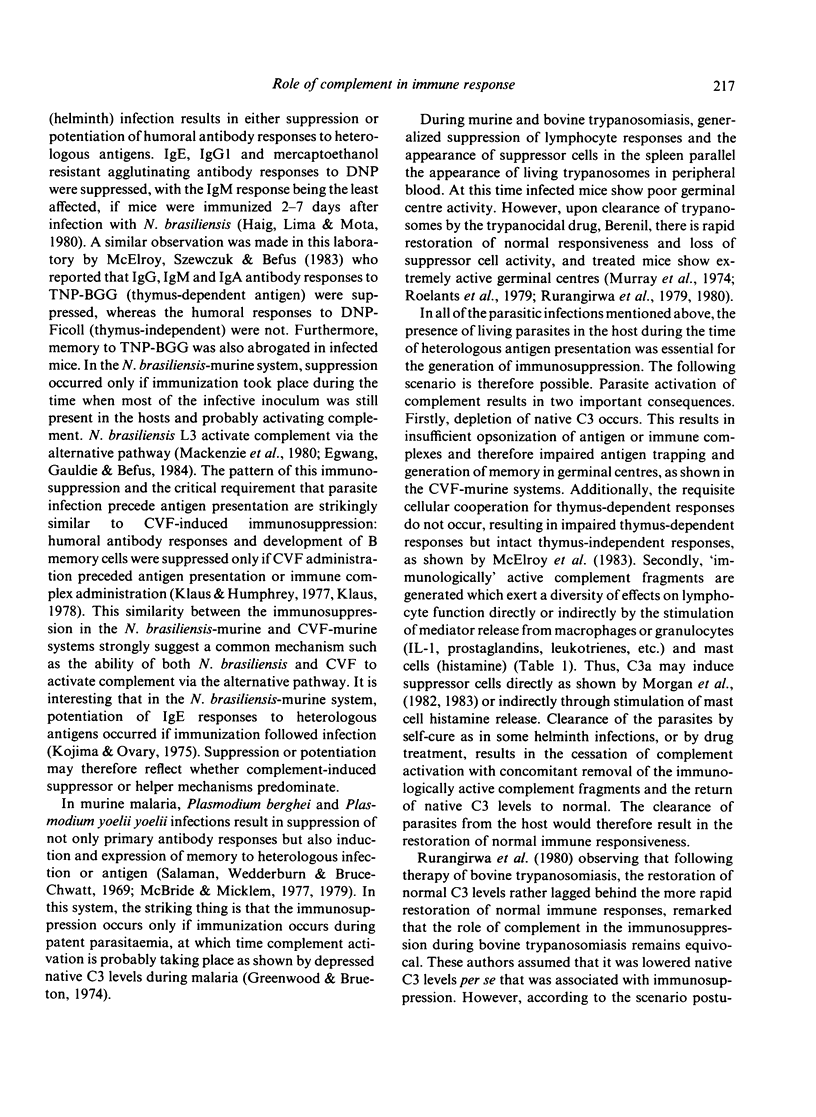
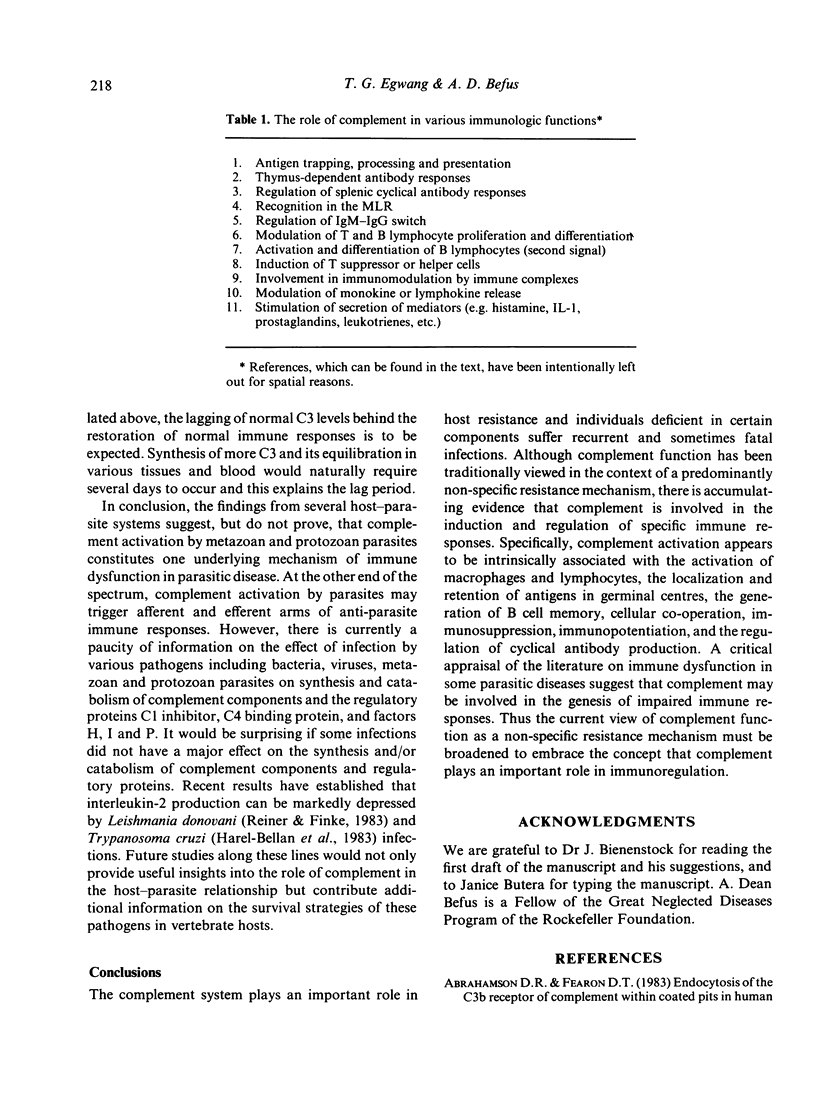
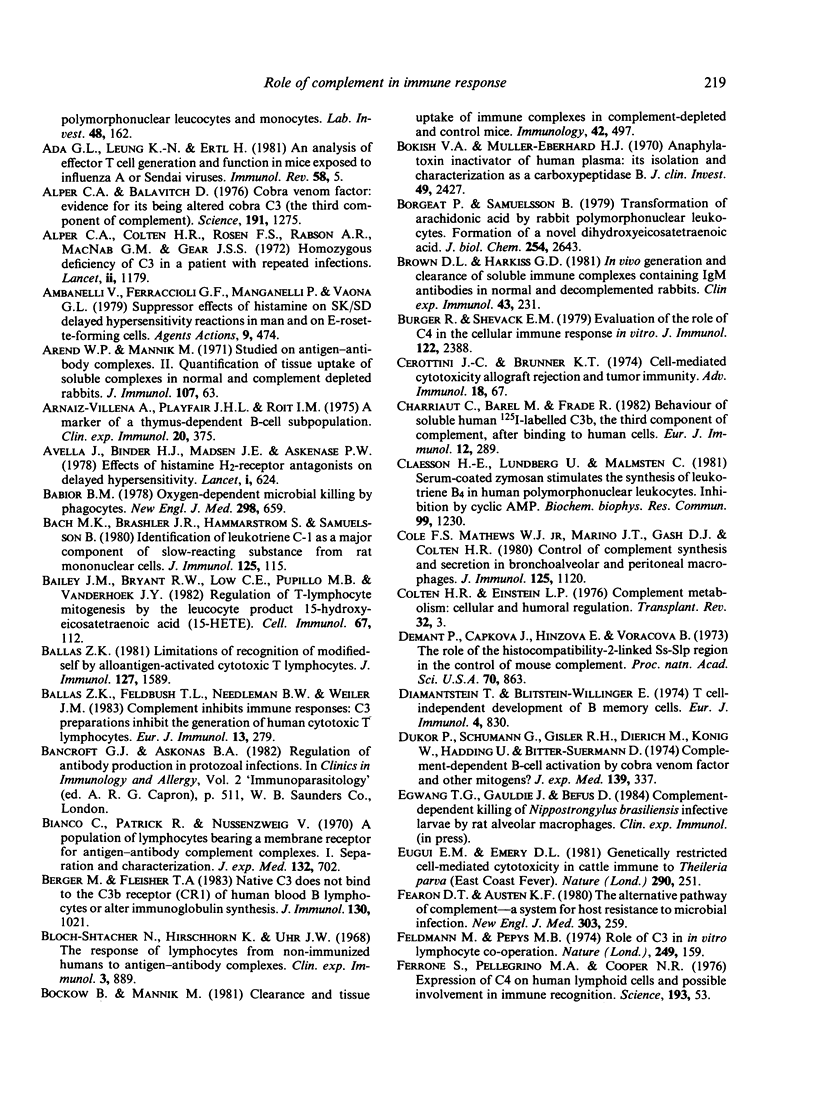
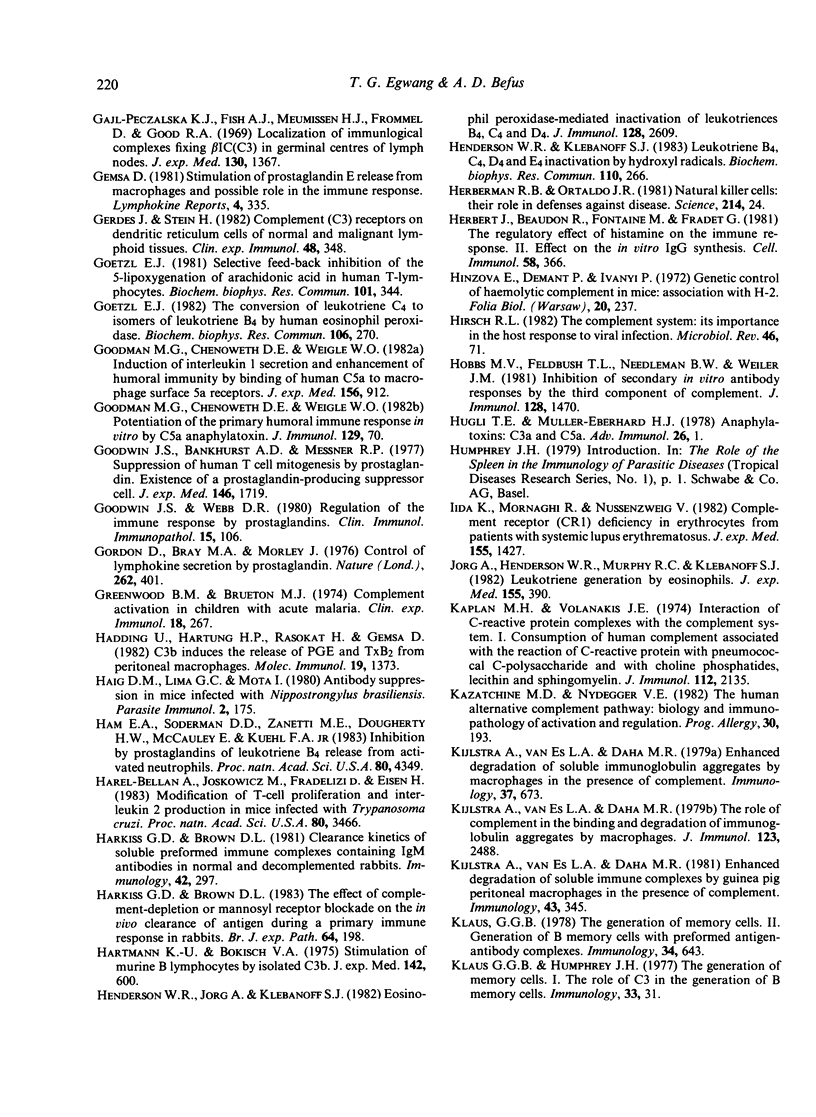
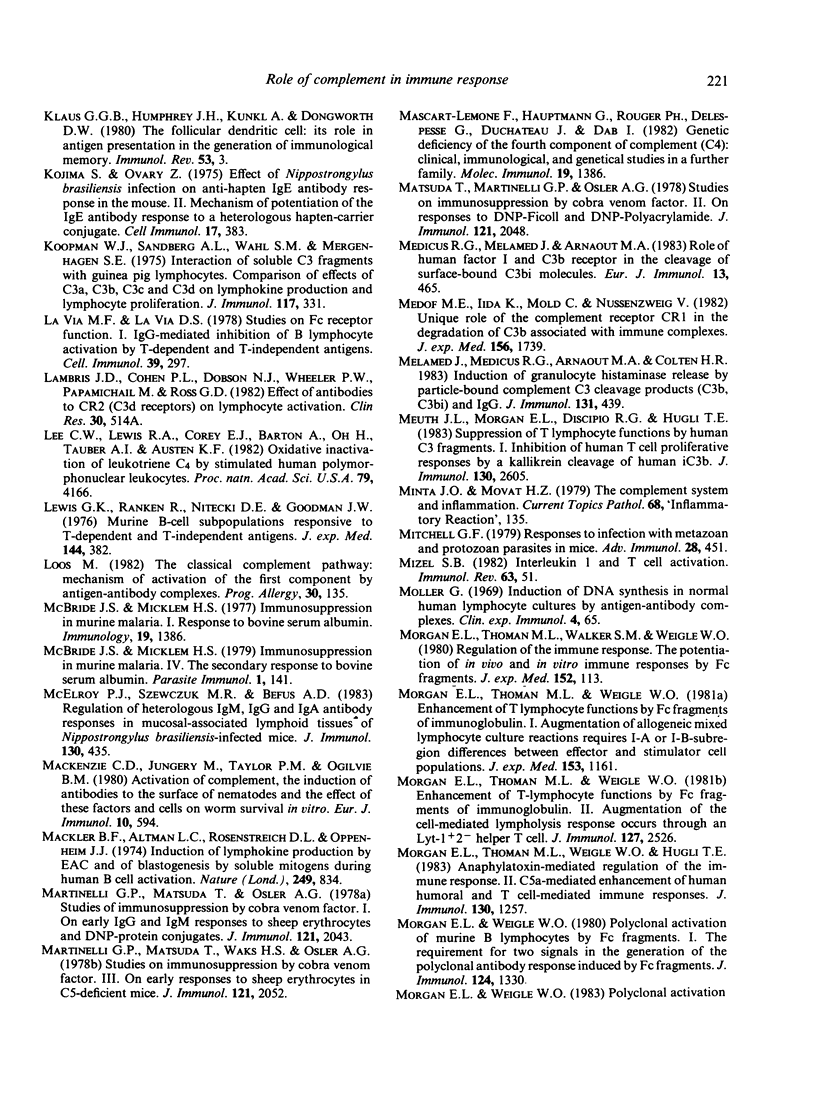
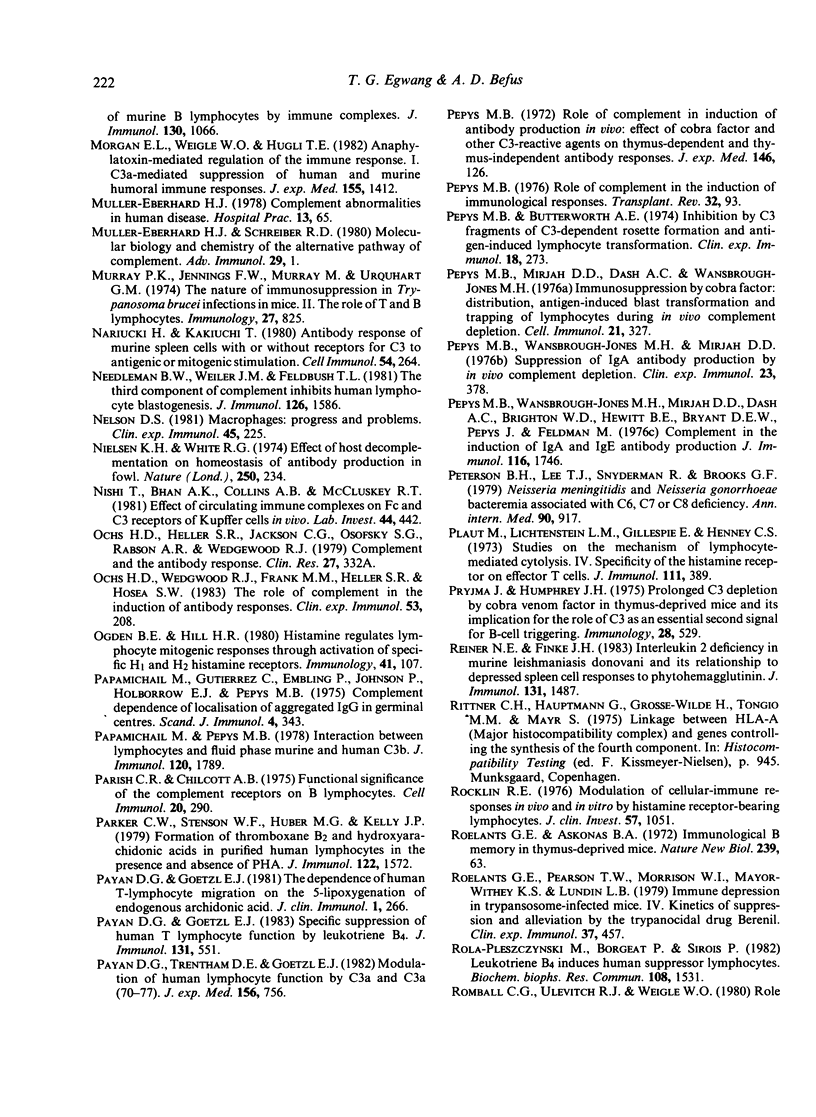
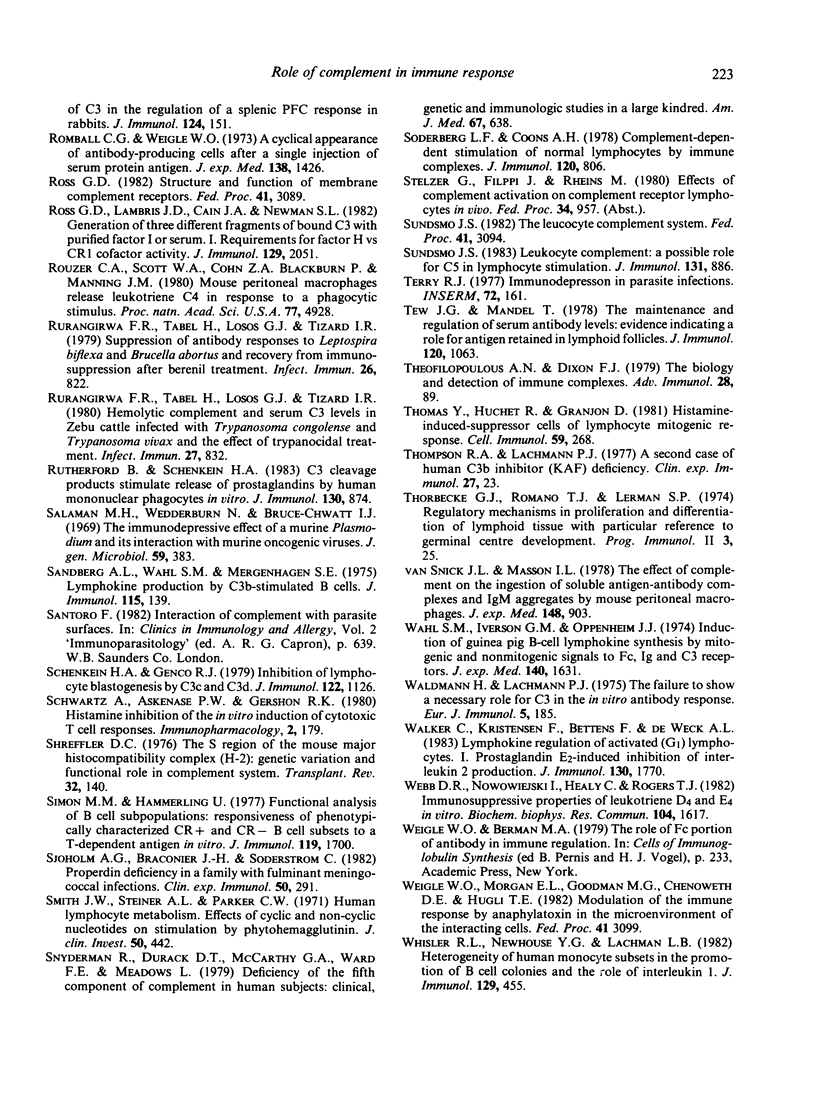
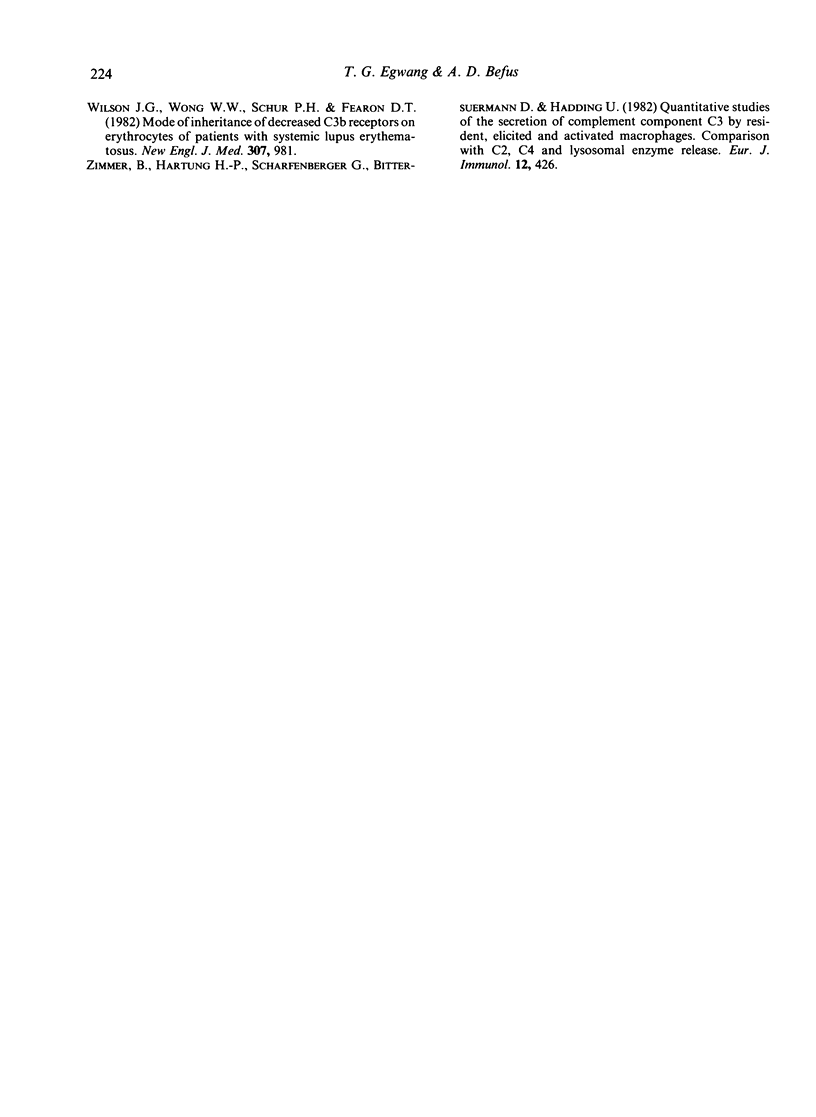
Selected References
These references are in PubMed. This may not be the complete list of references from this article.
- Abrahamson D. R., Fearon D. T. Endocytosis of the C3b receptor of complement within coated pits in human polymorphonuclear leukocytes and monocytes. Lab Invest. 1983 Feb;48(2):162–168. [PubMed] [Google Scholar]
- Ada G. L., Leung K. N., Ertl H. An analysis of effector T cell generation and function in mice exposed to influenza A or Sendai viruses. Immunol Rev. 1981;58:5–24. doi: 10.1111/j.1600-065x.1981.tb00347.x. [DOI] [PubMed] [Google Scholar]
- Alper C. A., Balavitch D. Cobra venom factor: evidence for its being altered cobra C3 (the third component of complement). Science. 1976 Mar 26;191(4233):1275–1276. doi: 10.1126/science.56780. [DOI] [PubMed] [Google Scholar]
- Alper C. A., Colten H. R., Rosen F. S., Rabson A. R., Macnab G. M., Gear J. S. Homozygous deficiency of C3 in a patient with repeated infections. Lancet. 1972 Dec 2;2(7788):1179–1181. doi: 10.1016/s0140-6736(72)92598-6. [DOI] [PubMed] [Google Scholar]
- Ambanelli U., Ferraccioli G. F., Mangenelli P., Vanona G. L. Suppressor effects of histamine on SK/SD delayed hypersensitivity reactions in man and on E-rosette-forming cells. Agents Actions. 1979 Dec;9(5-6):474–478. doi: 10.1007/BF01968113. [DOI] [PubMed] [Google Scholar]
- Arend W. P., Mannik M. Studies on antigen-antibody complexes. II. Quantification of tissue uptake of soluble complexes in normal and complement-depleted rabbits. J Immunol. 1971 Jul;107(1):63–75. [PubMed] [Google Scholar]
- Arnaiz-Villena A., Playfair J. H., Roitt I. M. C3 receptor. A marker of a thymus-dependent B-cell subpopulation. Clin Exp Immunol. 1975 May;20(2):375–378. [PMC free article] [PubMed] [Google Scholar]
- Avella J., Madsen J. E., Binder H. J., Askenase P. W. Effect of histamine H2-receptor antagonists on delayed hypersensitivity. Lancet. 1978 Mar 25;1(8065):624–626. doi: 10.1016/s0140-6736(78)91134-0. [DOI] [PubMed] [Google Scholar]
- Babior B. M. Oxygen-dependent microbial killing by phagocytes (first of two parts). N Engl J Med. 1978 Mar 23;298(12):659–668. doi: 10.1056/NEJM197803232981205. [DOI] [PubMed] [Google Scholar]
- Bach M. K., Brashler J. R., Hammarström S., Samuelsson B. Identification of leukotriene C-1 as a major component of slow-reacting substance from rat mononuclear cells. J Immunol. 1980 Jul;125(1):115–117. [PubMed] [Google Scholar]
- Bailey J. M., Bryant R. W., Low C. E., Pupillo M. B., Vanderhoek J. Y. Regulation of T-lymphocyte mitogenesis by the leukocyte product 15-hydroxy-eicosatetraenoic acid (15-HETE). Cell Immunol. 1982 Feb;67(1):112–120. doi: 10.1016/0008-8749(82)90203-9. [DOI] [PubMed] [Google Scholar]
- Ballas Z. K., Feldbush T. L., Needleman B. W., Weiler J. M. Complement inhibits immune responses: C3 preparations inhibit the generation of human cytotoxic T lymphocytes. Eur J Immunol. 1983 Apr;13(4):279–284. doi: 10.1002/eji.1830130403. [DOI] [PubMed] [Google Scholar]
- Ballas Z. K. Limitations of recognition of modified-self by alloantigen-activated cytotoxic T lymphocytes. J Immunol. 1981 Oct;127(4):1589–1591. [PubMed] [Google Scholar]
- Berger M., Fleisher T. A. Native C3 does not bind to the C3b receptor (CR1) of human blood B lymphocytes or alter immunoglobulin synthesis. J Immunol. 1983 Mar;130(3):1021–1023. [PubMed] [Google Scholar]
- Bianco C., Patrick R., Nussenzweig V. A population of lymphocytes bearing a membrane receptor for antigen-antibody-complement complexes. I. Separation and characterization. J Exp Med. 1970 Oct 1;132(4):702–720. doi: 10.1084/jem.132.4.702. [DOI] [PMC free article] [PubMed] [Google Scholar]
- Bloch-Shtacher N., Hirschhorn K., Uhr J. W. The response of lymphocytes from non-immunized humans to antigen-antibody complexes. Clin Exp Immunol. 1968 Nov;3(9):889–899. [PMC free article] [PubMed] [Google Scholar]
- Bockow B., Mannik M. Clearance and tissue uptake of immune complexes in complement-depleted and control mice. Immunology. 1981 Apr;42(4):497–504. [PMC free article] [PubMed] [Google Scholar]
- Bokisch V. A., Müller-Eberhard H. J. Anaphylatoxin inactivator of human plasma: its isolation and characterization as a carboxypeptidase. J Clin Invest. 1970 Dec;49(12):2427–2436. doi: 10.1172/JCI106462. [DOI] [PMC free article] [PubMed] [Google Scholar]
- Borgeat P., Samuelsson B. Transformation of arachidonic acid by rabbit polymorphonuclear leukocytes. Formation of a novel dihydroxyeicosatetraenoic acid. J Biol Chem. 1979 Apr 25;254(8):2643–2646. [PubMed] [Google Scholar]
- Brown D. L., Harkiss G. D. In vivo generation and clearance of soluble immune complexes containing IgM antibodies in normal and decomplemented rabbits. Clin Exp Immunol. 1981 Feb;43(2):231–239. [PMC free article] [PubMed] [Google Scholar]
- Burger R., Shevach E. M. Evaluation of the role of C4 in the cellular immune response in vitro. J Immunol. 1979 Jun;122(6):2388–2394. [PubMed] [Google Scholar]
- Cerottini J. C., Brunner K. T. Cell-mediated cytotoxicity, allograft rejection, and tumor immunity. Adv Immunol. 1974;18:67–132. doi: 10.1016/s0065-2776(08)60308-9. [DOI] [PubMed] [Google Scholar]
- Charriaut C., Barel M., Frade R. Behavior of soluble human 125I-labeled C3b, the third component of complement, after binding to human cells. Eur J Immunol. 1982 Apr;12(4):289–294. doi: 10.1002/eji.1830120407. [DOI] [PubMed] [Google Scholar]
- Claesson H. E., Lundberg U., Malmsten C. Serum-coated zymosan stimulates the synthesis of leukotriene B4 in human polymorphonuclear leukocytes. Inhibition by cyclic AMP. Biochem Biophys Res Commun. 1981 Apr 30;99(4):1230–1237. doi: 10.1016/0006-291x(81)90751-8. [DOI] [PubMed] [Google Scholar]
- Cole F. S., Matthews W. J., Jr, Marino J. T., Gash D. J., Colten H. R. Control of complement synthesis and secretion in bronchoalveolar and peritoneal macrophages. J Immunol. 1980 Sep;125(3):1120–1124. [PubMed] [Google Scholar]
- Colten H. R., Einstein L. P. Complement metabolism: cellular and humoral regulation. Transplant Rev. 1976;32:3–11. doi: 10.1111/j.1600-065x.1976.tb00225.x. [DOI] [PubMed] [Google Scholar]
- Dukor P., Schumann G., Gisler R. H., Dierich M., König W., Hadding U., Bitter-Suermann D. Complement-dependent B-cell activation by cobra venom factor and other mitogens? J Exp Med. 1974 Feb 1;139(2):337–354. doi: 10.1084/jem.139.2.337. [DOI] [PMC free article] [PubMed] [Google Scholar]
- Démant P., Capková J., Hinzová E., Vorácová B. The role of the histocompatibility-2-linked Ss-Slp region in the control of mouse complement. Proc Natl Acad Sci U S A. 1973 Mar;70(3):863–864. doi: 10.1073/pnas.70.3.863. [DOI] [PMC free article] [PubMed] [Google Scholar]
- Eugui E. M., Emery D. L. Genetically restricted cell-mediated cytotoxicity in cattle immune to Theileria parva. Nature. 1981 Mar 19;290(5803):251–254. doi: 10.1038/290251a0. [DOI] [PubMed] [Google Scholar]
- Fearon D. T., Austen K. F. Current concepts in immunology: the alternative pathway of complement--a system for host resistance to microbial infection. N Engl J Med. 1980 Jul 31;303(5):259–263. doi: 10.1056/NEJM198007313030505. [DOI] [PubMed] [Google Scholar]
- Feldmann M., Pepys M. B. Role of C3 in in vitro lymphocyte cooperation. Nature. 1974 May 10;249(453):159–161. doi: 10.1038/249159a0. [DOI] [PubMed] [Google Scholar]
- Gajl-Peczalska K. J., Fish A. J., Meuwissen H. J., Frommel D., Good R. A. Localization of immunological complexes fixing beta1C (C3) in germinal centers of lymph nodes. J Exp Med. 1969 Dec 1;130(6):1367–1393. doi: 10.1084/jem.130.6.1367. [DOI] [PMC free article] [PubMed] [Google Scholar]
- Gerdes J., Stein H. Complement (C3) receptors on dendritic reticulum cells of normal and malignant lymphoid tissue. Clin Exp Immunol. 1982 May;48(2):348–352. [PMC free article] [PubMed] [Google Scholar]
- Goetzl E. J. Selective feed-back inhibition of the 5-lipoxygenation of arachidonic acid in human T-lymphocytes. Biochem Biophys Res Commun. 1981 Jul 30;101(2):344–350. doi: 10.1016/0006-291x(81)91266-3. [DOI] [PubMed] [Google Scholar]
- Goetzl E. J. The conversion of leukotriene C4 to isomers of leukotriene B4 by human eosinophil peroxidase. Biochem Biophys Res Commun. 1982 May 31;106(2):270–275. doi: 10.1016/0006-291x(82)91105-6. [DOI] [PubMed] [Google Scholar]
- Goodman M. G., Chenoweth D. E., Weigle W. O. Induction of interleukin 1 secretion and enhancement of humoral immunity by binding of human C5a to macrophage surface C5a receptors. J Exp Med. 1982 Sep 1;156(3):912–917. doi: 10.1084/jem.156.3.912. [DOI] [PMC free article] [PubMed] [Google Scholar]
- Goodman M. G., Chenoweth D. E., Weigle W. O. Potentiation of the primary humoral immune response in vitro by C5a anaphylatoxin. J Immunol. 1982 Jul;129(1):70–75. [PubMed] [Google Scholar]
- Goodwin J. S., Bankhurst A. D., Messner R. P. Suppression of human T-cell mitogenesis by prostaglandin. Existence of a prostaglandin-producing suppressor cell. J Exp Med. 1977 Dec 1;146(6):1719–1734. doi: 10.1084/jem.146.6.1719. [DOI] [PMC free article] [PubMed] [Google Scholar]
- Goodwin J. S., Webb D. R. Regulation of the immune response by prostaglandins. Clin Immunol Immunopathol. 1980 Jan;15(1):106–122. doi: 10.1016/0090-1229(80)90024-0. [DOI] [PubMed] [Google Scholar]
- Gordon D., Bray M. A., Morley J. Control of lymphokine secretion by prostaglandins. Nature. 1976 Jul 29;262(5567):401–402. doi: 10.1038/262401a0. [DOI] [PubMed] [Google Scholar]
- Greenwood B. M., Brueton M. J. Complement activation in children with acute malaria. Clin Exp Immunol. 1974 Oct;18(2):267–272. [PMC free article] [PubMed] [Google Scholar]
- Haig D. M., Lima G. C., Mota I. Antibody suppression in mice infected with Nippostrongylus brasiliensis. Parasite Immunol. 1980 Autumn;2(3):175–187. doi: 10.1111/j.1365-3024.1980.tb00052.x. [DOI] [PubMed] [Google Scholar]
- Ham E. A., Soderman D. D., Zanetti M. E., Dougherty H. W., McCauley E., Kuehl F. A., Jr Inhibition by prostaglandins of leukotriene B4 release from activated neutrophils. Proc Natl Acad Sci U S A. 1983 Jul;80(14):4349–4353. doi: 10.1073/pnas.80.14.4349. [DOI] [PMC free article] [PubMed] [Google Scholar]
- Harel-Bellan A., Joskowicz M., Fradelizi D., Eisen H. Modification of T-cell proliferation and interleukin 2 production in mice infected with Trypanosoma cruzi. Proc Natl Acad Sci U S A. 1983 Jun;80(11):3466–3469. doi: 10.1073/pnas.80.11.3466. [DOI] [PMC free article] [PubMed] [Google Scholar]
- Harkiss G. D., Brown D. L. Clearance kinetics of soluble pre-formed immune complexes containing IgM antibodies in normal and decomplemented rabbits. Immunology. 1981 Feb;42(2):297–306. [PMC free article] [PubMed] [Google Scholar]
- Harkiss G. D., Brown D. L. The effect of complement-depletion or mannosyl receptor blockade on the in vivo clearance of antigen during a primary immune response in rabbits. Br J Exp Pathol. 1983 Apr;64(2):198–206. [PMC free article] [PubMed] [Google Scholar]
- Hartmann K. U., Bokisch V. A. Stimulation of murine B lymphocytes by isolated C3b. J Exp Med. 1975 Sep 1;142(3):600–610. doi: 10.1084/jem.142.3.600. [DOI] [PMC free article] [PubMed] [Google Scholar]
- Henderson W. R., Jörg A., Klebanoff S. J. Eosinophil peroxidase-mediated inactivation of leukotrienes B4, C4, and D4. J Immunol. 1982 Jun;128(6):2609–2613. [PubMed] [Google Scholar]
- Henderson W. R., Klebanoff S. J. Leukotriene B4, C4, D4 and E4 inactivation by hydroxyl radicals. Biochem Biophys Res Commun. 1983 Jan 14;110(1):266–272. doi: 10.1016/0006-291x(83)91290-1. [DOI] [PubMed] [Google Scholar]
- Hinzová E., Démant P., Iványi P. Genetic control of haemolytic complement in mice: association with H-2. Folia Biol (Praha) 1972;18(4):237–243. [PubMed] [Google Scholar]
- Hirsch R. L. The complement system: its importance in the host response to viral infection. Microbiol Rev. 1982 Mar;46(1):71–85. doi: 10.1128/mr.46.1.71-85.1982. [DOI] [PMC free article] [PubMed] [Google Scholar]
- Hobbs M. V., Feldbush T. L., Needleman B. W., Weiler J. M. Inhibition of secondary in vitro antibody responses by the third component of complement. J Immunol. 1982 Mar;128(3):1470–1475. [PubMed] [Google Scholar]
- Hugli T. E., Müller-Eberhard H. J. Anaphylatoxins: C3a and C5a. Adv Immunol. 1978;26:1–53. doi: 10.1016/s0065-2776(08)60228-x. [DOI] [PubMed] [Google Scholar]
- Hébert J., Beaudoin R., Fontaine M., Fradet G. The regulatory effect of histamine on the immune response. II. Effect on the in vitro IGG synthesis. Cell Immunol. 1981 Mar 1;58(2):366–371. doi: 10.1016/0008-8749(81)90230-6. [DOI] [PubMed] [Google Scholar]
- Iida K., Mornaghi R., Nussenzweig V. Complement receptor (CR1) deficiency in erythrocytes from patients with systemic lupus erythematosus. J Exp Med. 1982 May 1;155(5):1427–1438. doi: 10.1084/jem.155.5.1427. [DOI] [PMC free article] [PubMed] [Google Scholar]
- Jörg A., Henderson W. R., Murphy R. C., Klebanoff S. J. Leukotriene generation by eosinophils. J Exp Med. 1982 Feb 1;155(2):390–402. doi: 10.1084/jem.155.2.390. [DOI] [PMC free article] [PubMed] [Google Scholar]
- Kaplan M. H., Volanakis J. E. Interaction of C-reactive protein complexes with the complement system. I. Consumption of human complement associated with the reaction of C-reactive protein with pneumococcal C-polysaccharide and with the choline phosphatides, lecithin and sphingomyelin. J Immunol. 1974 Jun;112(6):2135–2147. [PubMed] [Google Scholar]
- Kazatchkine M. D., Nydegger U. E. The human alternative complement pathway: biology and immunopathology of activation and regulation. Prog Allergy. 1982;30:193–234. [PubMed] [Google Scholar]
- Kijlstra A., Van Es L. A., Daha M. R. Enhanced degradation of soluble immunoglobulin aggregates by macrophages in the presence of complement. Immunology. 1979 Jul;37(3):673–680. [PMC free article] [PubMed] [Google Scholar]
- Kijlstra A., van Es L. A., Daha M. R. Enhanced degradation of soluble immune complexes by guinea-pig peritoneal macrophages in the presence of complement. Immunology. 1981 Jun;43(2):345–352. [PMC free article] [PubMed] [Google Scholar]
- Kijlstra A., van Es L. A., Daha M. R. The role of complement in the binding and degradation of immunoglobulin aggregates by macrophages. J Immunol. 1979 Dec;123(6):2488–2493. [PubMed] [Google Scholar]
- Klaus G. G., Humphrey J. H., Kunkl A., Dongworth D. W. The follicular dendritic cell: its role in antigen presentation in the generation of immunological memory. Immunol Rev. 1980;53:3–28. doi: 10.1111/j.1600-065x.1980.tb01038.x. [DOI] [PubMed] [Google Scholar]
- Kojima S., Ovary Z. Effect of Nippostrongylus brasiliensis infection on anti-hapten IgE antibody response in the mouse. II. Mechanism of potentiation of the IgE antibody response to a heterologous hapten-carrier conjugate. Cell Immunol. 1975 Jun;17(2):383–391. doi: 10.1016/s0008-8749(75)80042-6. [DOI] [PubMed] [Google Scholar]
- La Via M. F., La Via D. S. Studies on Fc receptor function. I. IgG-mediated inhibition of B lymphocyte activation by T-dependent and T-independent antigens. Cell Immunol. 1978 Sep;39(2):297–306. doi: 10.1016/0008-8749(78)90105-3. [DOI] [PubMed] [Google Scholar]
- Lee C. W., Lewis R. A., Corey E. J., Barton A., Oh H., Tauber A. I., Austen K. F. Oxidative inactivation of leukotriene C4 by stimulated human polymorphonuclear leukocytes. Proc Natl Acad Sci U S A. 1982 Jul;79(13):4166–4170. doi: 10.1073/pnas.79.13.4166. [DOI] [PMC free article] [PubMed] [Google Scholar]
- Lewis G. K., Ranken R., Nitecki D. E., Goodman J. W. Murine B-cell subpopulations responsive to T-dependent and T-independent antigens. J Exp Med. 1976 Aug 1;144(2):382–397. doi: 10.1084/jem.144.2.382. [DOI] [PMC free article] [PubMed] [Google Scholar]
- Loos M. The classical complement pathway: mechanism of activation of the first component by antigen-antibody complexes. Prog Allergy. 1982;30:135–192. [PubMed] [Google Scholar]
- Mackenzie C. D., Jungery M., Taylor P. M., Ogilvie B. M. Activation of complement, the induction of antibodies to the surface of nematodes and the effect of these factors and cells on worm survival in vitro. Eur J Immunol. 1980 Aug;10(8):594–601. doi: 10.1002/eji.1830100805. [DOI] [PubMed] [Google Scholar]
- Mackler B. F., Altman L. C., Rosenstreich D. L., Oppenheim J. J. Induction of lymphokine production by EAC and of blastogenesis by soluble mitogens during human B-cell activation. Nature. 1974 Jun 28;249(460):834–837. doi: 10.1038/249834a0. [DOI] [PubMed] [Google Scholar]
- Martinelli G. P., Matsuda T., Osler A. G. Studies of immunosuppression by cobra venom factor. I. On early IgG and IgM responses to sheep erythrocytes and DNP-protein conjugates. J Immunol. 1978 Nov;121(5):2043–2047. [PubMed] [Google Scholar]
- Matsuda T., Martinelli G. P., Osler A. G. Studies on immunosuppression by cobra venom factor. II. On responses to DNP-Ficoll and DNP-Polyacrylamide. J Immunol. 1978 Nov;121(5):2048–2051. [PubMed] [Google Scholar]
- McElroy P. J., Szewczuk M. R., Befus A. D. Regulation of heterologous IgM, IgG, and IgA antibody responses in mucosal-associated lymphoid tissues of Nippostrongylus brasiliensis-infected mice. J Immunol. 1983 Jan;130(1):435–441. [PubMed] [Google Scholar]
- Medicus R. G., Melamed J., Arnaout M. A. Role of human factor I and C3b receptor in the cleavage of surface-bound C3bi molecules. Eur J Immunol. 1983 Jun;13(6):465–470. doi: 10.1002/eji.1830130607. [DOI] [PubMed] [Google Scholar]
- Medof M. E., Iida K., Mold C., Nussenzweig V. Unique role of the complement receptor CR1 in the degradation of C3b associated with immune complexes. J Exp Med. 1982 Dec 1;156(6):1739–1754. doi: 10.1084/jem.156.6.1739. [DOI] [PMC free article] [PubMed] [Google Scholar]
- Melamed J., Medicus R. G., Arnaout M. A., Colten H. R. Induction of granulocyte histaminase release by particle-bound complement C3 cleavage products (C3b, C3bi) and IgG. J Immunol. 1983 Jul;131(1):439–444. [PubMed] [Google Scholar]
- Meuth J. L., Morgan E. L., DiSipio R. G., Hugli T. E. Suppression of T lymphocyte functions by human C3 fragments. I. Inhibition of human T cell proliferative responses by a kallikrein cleavage fragment of human iC3b. J Immunol. 1983 Jun;130(6):2605–2611. [PubMed] [Google Scholar]
- Minta J. O., Movat H. Z. The complement system and inflammation. Curr Top Pathol. 1979;68:135–178. doi: 10.1007/978-3-642-67311-5_6. [DOI] [PubMed] [Google Scholar]
- Mitchell G. F. Responses to infection with metazoan and protozoan parasites in mice. Adv Immunol. 1979;28:451–511. doi: 10.1016/s0065-2776(08)60803-2. [DOI] [PubMed] [Google Scholar]
- Mizel S. B. Interleukin 1 and T cell activation. Immunol Rev. 1982;63:51–72. doi: 10.1111/j.1600-065x.1982.tb00411.x. [DOI] [PubMed] [Google Scholar]
- Morgan E. L., Thoman M. L., Weigle W. O. Enhancement of T lymphocyte functions by Fc fragments of immunoglobulins. I. Augmentation of allogeneic mixed lymphocyte culture reactions requires I-A- or I-B-subregion differences between effector and stimulator cell populations. J Exp Med. 1981 May 1;153(5):1161–1172. doi: 10.1084/jem.153.5.1161. [DOI] [PMC free article] [PubMed] [Google Scholar]
- Morgan E. L., Thoman M. L., Weigle W. O. Enhancement of T. lymphocyte functions by Fc fragments of immunoglobulin. II. Augmentation of the cell-mediated lympholysis response occurs through an Lyt-1+2- helper T cell. J Immunol. 1981 Dec;127(6):2526–2530. [PubMed] [Google Scholar]
- Morgan E. L., Thoman M. L., Weigle W. O., Hugli T. E. Anaphylatoxin-mediated regulation of the immune response. II. C5a-mediated enhancement of human humoral and T cell-mediated immune responses. J Immunol. 1983 Mar;130(3):1257–1261. [PubMed] [Google Scholar]
- Morgan E. L., Walker S. M., Thoman M. L., Weigle W. O. Regulation of the immune response. I. The potentiation of in vivo and in vitro immune responses by Fc fragments. J Exp Med. 1980 Jul 1;152(1):113–123. doi: 10.1084/jem.152.1.113. [DOI] [PMC free article] [PubMed] [Google Scholar]
- Morgan E. L., Weigle W. O., Hugli T. E. Anaphylatoxin-mediated regulation of the immune response. I. C3a-mediated suppression of human and murine humoral immune responses. J Exp Med. 1982 May 1;155(5):1412–1426. doi: 10.1084/jem.155.5.1412. [DOI] [PMC free article] [PubMed] [Google Scholar]
- Morgan E. L., Weigle W. O. Polyclonal activation of murine B lymphocytes by Fc fragments. I. The requirement for two signals in the generation of the polyclonal antibody response induced by Fc fragments. J Immunol. 1980 Mar;124(3):1330–1335. [PubMed] [Google Scholar]
- Morgan E. L., Weigle W. O. Polyclonal activation of murine B lymphocytes by immune complexes. J Immunol. 1983 Mar;130(3):1066–1070. [PubMed] [Google Scholar]
- Murray P. K., Jennings F. W., Murray M., Urquhart G. M. The nature of immunosuppression in Trypanosoma brucei infections in mice. II. The role of the T and B lymphocytes. Immunology. 1974 Nov;27(5):825–840. [PMC free article] [PubMed] [Google Scholar]
- Möller G. Induction of DNA synthesis in normal human lymphocyte cultures by antigen-antibody complexes. Clin Exp Immunol. 1969 Jan;4(1):65–82. [PMC free article] [PubMed] [Google Scholar]
- Müller-Eberhard H. J. Complement abnormalities in human disease. Hosp Pract. 1978 Dec;13(12):65–76. doi: 10.1080/21548331.1978.11707450. [DOI] [PubMed] [Google Scholar]
- Müller-Eberhard H. J., Schreiber R. D. Molecular biology and chemistry of the alternative pathway of complement. Adv Immunol. 1980;29:1–53. doi: 10.1016/s0065-2776(08)60042-5. [DOI] [PubMed] [Google Scholar]
- Nariuchi H., Kakiuchi T. Antibody response of murine spleen cells with or without receptors for C3 to antigenic or mitogenic stimulation. Cell Immunol. 1980 Sep 1;54(2):264–273. doi: 10.1016/0008-8749(80)90208-7. [DOI] [PubMed] [Google Scholar]
- Needleman B. W., Weiler J. M., Feldbush T. L. The third component of complement inhibits human lymphocyte blastogenesis. J Immunol. 1981 Apr;126(4):1586–1591. [PubMed] [Google Scholar]
- Nelson D. S. Macrophages: progress and problems. Clin Exp Immunol. 1981 Aug;45(2):225–233. [PMC free article] [PubMed] [Google Scholar]
- Nielsen K. H., White R. G. Effect of host decomplementation on homeostasis of antibody production in fowl. Nature. 1974 Jul 19;250(463):234–236. doi: 10.1038/250234a0. [DOI] [PubMed] [Google Scholar]
- Nishi T., Bhan A. K., Collins A. B., McCluskey R. T. Effect of circulating immune complexes on Fc and C3 receptors of Kupffer cells in vivo. Lab Invest. 1981 May;44(5):442–448. [PubMed] [Google Scholar]
- Ochs H. D., Wedgwood R. J., Frank M. M., Heller S. R., Hosea S. W. The role of complement in the induction of antibody responses. Clin Exp Immunol. 1983 Jul;53(1):208–216. [PMC free article] [PubMed] [Google Scholar]
- Ogden B. E., Hill H. R. Histamine regulates lymphocyte mitogenic responses through activation of specific H1 and H2 histamine receptors. Immunology. 1980 Sep;41(1):107–114. [PMC free article] [PubMed] [Google Scholar]
- Papamichail M., Gutierrez C., Embling P., Johnson P., Holborow E. J., Pepys M. B. Complement dependence of localisation of aggregated IgG in germinal centres. Scand J Immunol. 1975;4(4):343–347. doi: 10.1111/j.1365-3083.1975.tb02635.x. [DOI] [PubMed] [Google Scholar]
- Parish C. R., Chilcott A. B. Functional significance of the complement receptors on B lymphocytes. Cell Immunol. 1975 Dec;20(2):290–303. doi: 10.1016/0008-8749(75)90106-9. [DOI] [PubMed] [Google Scholar]
- Parker C. W., Stenson W. F., Huber M. G., Kelly J. P. Formation of thromboxane B2 and hydroxyarachidonic acids in purified human lymphocytes in the presence and absence of PHA. J Immunol. 1979 Apr;122(4):1572–1577. [PubMed] [Google Scholar]
- Payan D. G., Goetzl E. J. Specific suppression of human T lymphocyte function by leukotriene B4. J Immunol. 1983 Aug;131(2):551–553. [PubMed] [Google Scholar]
- Payan D. G., Trentham D. E., Goetzl E. J. Modulation of human lymphocyte function by C3a and C3a(70-77). J Exp Med. 1982 Sep 1;156(3):756–765. doi: 10.1084/jem.156.3.756. [DOI] [PMC free article] [PubMed] [Google Scholar]
- Pepys M. B., Butterworth A. E. Inhibition by C3 fragments of C3-dependent rosette formation and antigen-induced lymphocyte transformation. Clin Exp Immunol. 1974 Oct;18(2):273–282. [PMC free article] [PubMed] [Google Scholar]
- Pepys M. B., Mirjah D. D., Dash A. C., Wansbrough-Jones M. H. Immunosuppression by cobra factor: distribution, antigen-induced blast transformation and trapping of lymphocytes during in vivo complement depletion. Cell Immunol. 1976 Feb;21(2):327–336. doi: 10.1016/0008-8749(76)90060-5. [DOI] [PubMed] [Google Scholar]
- Pepys M. B. Role of complement in the induction of immunological responses. Transplant Rev. 1976;32:93–120. doi: 10.1111/j.1600-065x.1976.tb00230.x. [DOI] [PubMed] [Google Scholar]
- Petersen B. H., Lee T. J., Snyderman R., Brooks G. F. Neisseria meningitidis and Neisseria gonorrhoeae bacteremia associated with C6, C7, or C8 deficiency. Ann Intern Med. 1979 Jun;90(6):917–920. doi: 10.7326/0003-4819-90-6-917. [DOI] [PubMed] [Google Scholar]
- Plaut M., Lichtenstein L. M., Gillespie E., Henney C. S. Studies on the mechanism of lymphocyte-mediated cytolysis. IV. Specificity of the histamine receptor on effector T cells. J Immunol. 1973 Aug;111(2):389–394. [PubMed] [Google Scholar]
- Reiner N. E., Finke J. H. Interleukin 2 deficiency in murine Leishmaniasis donovani and its relationship to depressed spleen cell responses to phytohemagglutinin. J Immunol. 1983 Sep;131(3):1487–1491. [PubMed] [Google Scholar]
- Rocklin R. E. Modulation of cellular-immune responses in vivo and in vitro by histamine receptor-bearing lymphocytes. J Clin Invest. 1976 Apr;57(4):1051–1058. doi: 10.1172/JCI108347. [DOI] [PMC free article] [PubMed] [Google Scholar]
- Roelants G. E., Askonas B. A. Immunological B memory in thymus deprived mice. Nat New Biol. 1972 Sep 13;239(89):63–64. doi: 10.1038/newbio239063a0. [DOI] [PubMed] [Google Scholar]
- Roelants G. E., Pearson T. W., Morrison W. I., Mayor-Withey K. S., Lundin L. B. Immune depression in trypanosome-infected mice. IV. Kinetics of suppression and alleviation by the trypanocidal drug Berenil. Clin Exp Immunol. 1979 Sep;37(3):457–469. [PMC free article] [PubMed] [Google Scholar]
- Rola-Pleszczynski M., Borgeat P., Sirois P. Leukotriene B4 induces human suppressor lymphocytes. Biochem Biophys Res Commun. 1982 Oct 29;108(4):1531–1537. doi: 10.1016/s0006-291x(82)80081-8. [DOI] [PubMed] [Google Scholar]
- Romball C. G., Ulevitch R. J., Weigle W. O. Role of C3 in the regulation of a splenic PFC response in rabbits. J Immunol. 1980 Jan;124(1):151–155. [PubMed] [Google Scholar]
- Romball C. G., Weigle W. O. A cyclical appearance of antibody-producing cells after a single injection of serum protein antigen. J Exp Med. 1973 Dec 1;138(6):1426–1442. doi: 10.1084/jem.138.6.1426. [DOI] [PMC free article] [PubMed] [Google Scholar]
- Ross G. D., Lambris J. D., Cain J. A., Newman S. L. Generation of three different fragments of bound C3 with purified factor I or serum. I. Requirements for factor H vs CR1 cofactor activity. J Immunol. 1982 Nov;129(5):2051–2060. [PubMed] [Google Scholar]
- Ross G. D. Structure and function of membrane complement receptors. Summary. Fed Proc. 1982 Dec;41(14):3089–3093. [PubMed] [Google Scholar]
- Rouzer C. A., Scott W. A., Cohn Z. A., Blackburn P., Manning J. M. Mouse peritoneal macrophages release leukotriene C in response to a phagocytic stimulus. Proc Natl Acad Sci U S A. 1980 Aug;77(8):4928–4932. doi: 10.1073/pnas.77.8.4928. [DOI] [PMC free article] [PubMed] [Google Scholar]
- Rurangirwa F. R., Tabel H., Losos G. J., Tizard I. R. Suppression of antibody response to Leptospira biflexa and Brucella abortus and recovery from immunosuppression after Berenil treatment. Infect Immun. 1979 Dec;26(3):822–826. doi: 10.1128/iai.26.3.822-826.1979. [DOI] [PMC free article] [PubMed] [Google Scholar]
- Rurangirwa F. R., Tabel H., Losos G., Tizard I. R. Hemolytic complement and serum C3 levels in Zebu cattle infected with Trypanosoma congolense and Trypanosoma vivax and the effect of trypanocidal treatment. Infect Immun. 1980 Mar;27(3):832–836. doi: 10.1128/iai.27.3.832-836.1980. [DOI] [PMC free article] [PubMed] [Google Scholar]
- Rutherford B., Schenkein H. A. C3 cleavage products stimulate release of prostaglandins by human mononuclear phagocytes in vitro. J Immunol. 1983 Feb;130(2):874–877. [PubMed] [Google Scholar]
- Salaman M. H., Wedderburn N., Bruce-Chwatt L. J. The immunodepressive effect of a murine plasmodium and its interaction with murine oncogenic viruses. J Gen Microbiol. 1969 Dec;59(3):383–391. doi: 10.1099/00221287-59-3-383. [DOI] [PubMed] [Google Scholar]
- Sandberg A. L., Wahl S. M., Mergenhagen S. E. Lymphokine production by C3b-stimulated B cells. J Immunol. 1975 Jul;115(1):139–144. [PubMed] [Google Scholar]
- Schenkein H. A., Genco R. J. Inhibition of lymphocyte blastogenesis by C3c and C3d. J Immunol. 1979 Mar;122(3):1126–1133. [PubMed] [Google Scholar]
- Schwartz A., Askenase P. W., Gershon R. K. Histamine inhibition of the in vitro induction of cytotoxic T-cell responses. Immunopharmacology. 1980 Jun;2(3):179–190. doi: 10.1016/0162-3109(80)90048-x. [DOI] [PubMed] [Google Scholar]
- Shreffler D. C. The S region of the mouse major histocompatibility complex (H-2): genetic variation and functional role in complement system. Transplant Rev. 1976;32:140–167. doi: 10.1111/j.1600-065x.1976.tb00232.x. [DOI] [PubMed] [Google Scholar]
- Simon M. M., Hämmerling U. Functional analysis of B cell subpopulations: responsiveness of phenotypically characterized CR+ and CR- B cell subsets to a T-dependent antigen in vitro. J Immunol. 1977 Nov;119(5):1700–1705. [PubMed] [Google Scholar]
- Sjöholm A. G., Braconier J. H., Söderström C. Properdin deficiency in a family with fulminant meningococcal infections. Clin Exp Immunol. 1982 Nov;50(2):291–297. [PMC free article] [PubMed] [Google Scholar]
- Smith J. W., Steiner A. L., Parker C. W. Human lymphocytic metabolism. Effects of cyclic and noncyclic nucleotides on stimulation by phytohemagglutinin. J Clin Invest. 1971 Feb;50(2):442–448. doi: 10.1172/JCI106511. [DOI] [PMC free article] [PubMed] [Google Scholar]
- Snyderman R., Durack D. T., McCarty G. A., Ward F. E., Meadows L. Deficiency of the fifth component of complement in human subjects. Clinical, genetic and immunologic studies in a large kindred. Am J Med. 1979 Oct;67(4):638–645. doi: 10.1016/0002-9343(79)90247-x. [DOI] [PubMed] [Google Scholar]
- Soderberg L. S., Coons A. H. Complement-dependent stimulation of normal lymphocytes by immune complexes. J Immunol. 1978 Mar;120(3):806–811. [PubMed] [Google Scholar]
- Strambachová-McBride J., Micklem H. S. Immunosuppression in murine malaria. IV. The secondary response to bovine serum albumin. Parasite Immunol. 1979 Summer;1(2):141–157. doi: 10.1111/j.1365-3024.1979.tb00702.x. [DOI] [PubMed] [Google Scholar]
- Sundsmo J. S. Leukocyte complement: a possible role for C5 in lymphocyte stimulation. J Immunol. 1983 Aug;131(2):886–891. [PubMed] [Google Scholar]
- Sundsmo J. S. The leukocyte complement system. Fed Proc. 1982 Dec;41(14):3094–3098. [PubMed] [Google Scholar]
- Tew J. G., Mandel T. The maintenance and regulation of serum antibody levels: evidence indicating a role for antigen retained in lymphoid follicles. J Immunol. 1978 Mar;120(3):1063–1069. [PubMed] [Google Scholar]
- Theofilopoulos A. N., Dixon F. J. The biology and detection of immune complexes. Adv Immunol. 1979;28:89–220. doi: 10.1016/s0065-2776(08)60800-7. [DOI] [PubMed] [Google Scholar]
- Thomas Y., Huchet R., Granjon D. Histamine-induced suppressor cells of lymphocyte mitogenic response. Cell Immunol. 1981 Apr;59(2):268–275. doi: 10.1016/0008-8749(81)90408-1. [DOI] [PubMed] [Google Scholar]
- Thompson R. A., Lachmann P. J. A second case of human C3b inhibitor (KAF) deficiency. Clin Exp Immunol. 1977 Jan;27(1):23–29. [PMC free article] [PubMed] [Google Scholar]
- Wahl S. M., Iverson G. M., Oppenheim J. J. Induction of guinea pig B-cell lymphokine synthesis by mitogenic and nonmitogenic signals to Fc, Ig, and C3 receptors. J Exp Med. 1974 Dec 1;140(6):1631–1645. doi: 10.1084/jem.140.6.1631. [DOI] [PMC free article] [PubMed] [Google Scholar]
- Waldmann H., Lachmann P. J. The failure to show a necessary role for C3 in the in vitro antibody response. Eur J Immunol. 1975 Mar;5(3):185–193. doi: 10.1002/eji.1830050307. [DOI] [PubMed] [Google Scholar]
- Walker C., Kristensen F., Bettens F., deWeck A. L. Lymphokine regulation of activated (G1) lymphocytes. I. Prostaglandin E2-induced inhibition of interleukin 2 production. J Immunol. 1983 Apr;130(4):1770–1773. [PubMed] [Google Scholar]
- Webb D. R., Nowowiejski I., Healy C., Rogers T. J. Immunosuppressive properties of leukotriene D4 and E4 in vitro. Biochem Biophys Res Commun. 1982 Feb 26;104(4):1617–1622. doi: 10.1016/0006-291x(82)91438-3. [DOI] [PubMed] [Google Scholar]
- Weigle W. O., Morgan E. L., Goodman M. G., Chenoweth D. E., Hugli T. E. Modulation of the immune response by anaphylatoxin in the microenvironment of the interacting cells. Fed Proc. 1982 Dec;41(14):3099–3103. [PubMed] [Google Scholar]
- Whisler R. L., Newhouse Y. G., Lachman L. B. Heterogeneity of human monocyte subsets in the promotion of B cell colonies and the role of interleukin 1. J Immunol. 1982 Aug;129(2):455–460. [PubMed] [Google Scholar]
- Wilson J. G., Wong W. W., Schur P. H., Fearon D. T. Mode of inheritance of decreased C3b receptors on erythrocytes of patients with systemic lupus erythematosus. N Engl J Med. 1982 Oct 14;307(16):981–986. doi: 10.1056/NEJM198210143071604. [DOI] [PubMed] [Google Scholar]
- Zimmer B., Hartung H. P., Scharfenberger G., Bitter-Suermann D., Hadding U. Quantitative studies of the secretion of complement component C3 by resident, elicited and activated macrophages. Comparison with C2, C4 and lysosomal enzyme release. Eur J Immunol. 1982 May;12(5):426–430. doi: 10.1002/eji.1830120513. [DOI] [PubMed] [Google Scholar]
- van Snick J. L., Masson P. L. The effect of complement on the ingestion of soluble antigen-antibody complexes and IgM aggregates by mouse peritoneal macrophages. J Exp Med. 1978 Oct 1;148(4):903–914. doi: 10.1084/jem.148.4.903. [DOI] [PMC free article] [PubMed] [Google Scholar]


